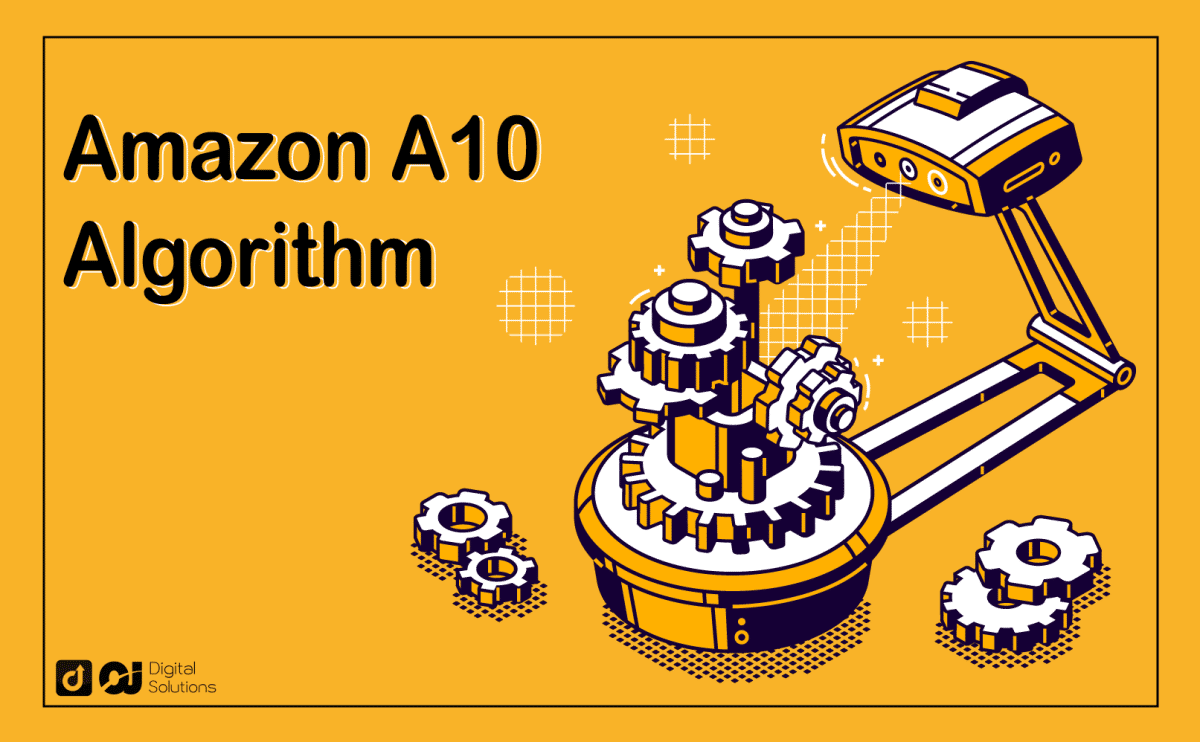Product ranking is a KEY component of a profitable Amazon business.
In fact, according to this study, 2/3 of clicks happen on the first page, and only 30% of Amazon customers go to the second page of Amazon’s search results when looking to buy a product.
Understanding how Amazon’s algorithm works is crucial for sellers who want to be successful on the platform.
So what is the Amazon A10 algorithm, and how does it work?
In this guide, I will explain exactly how the Amazon algorithm works and cover key factors that influence this algorithm.
Without further ado, let’s get started!
What is an Amazon Search Algorithm?
It all starts with a query on the Amazon search bar.

The quality and relevancy of the results in relation to a given search query are determined by a complicated set of ranking factors known as a search algorithm.
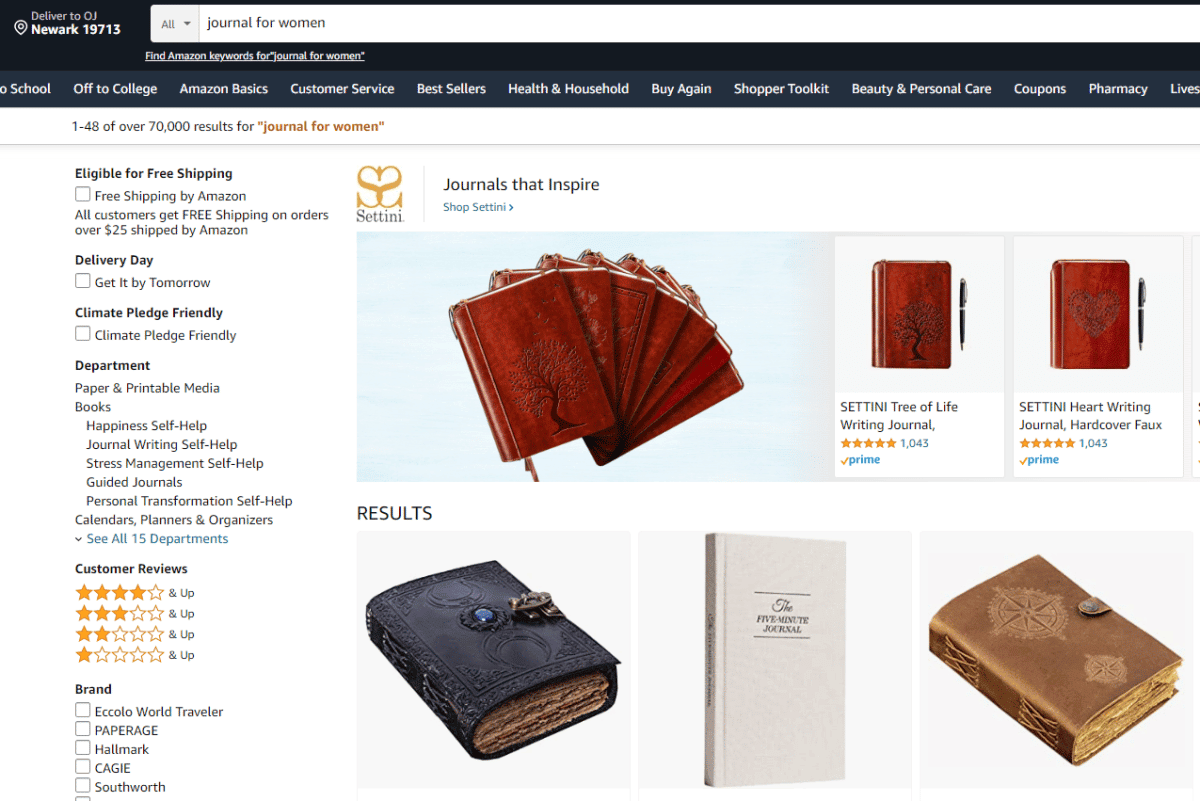
Algorithms are constantly changing to deliver the most accurate results.
Although Amazon and Google search engines share many basic similarities, there is one key difference between them.
Amazon has its entire attention fixed on the purchasing experience, in contrast to Google, which is centered on research.
As a result, while Amazon places a higher priority on conversion and sales numbers, Google rates websites based on their topical authority or other factors such as the loading time.
If you think about it, it does make sense.
You mainly go to Google to search for answers to your questions and solutions to your problems (aka information collection mode)

But you mainly go to Amazon when you want to buy something (aka buying mode)
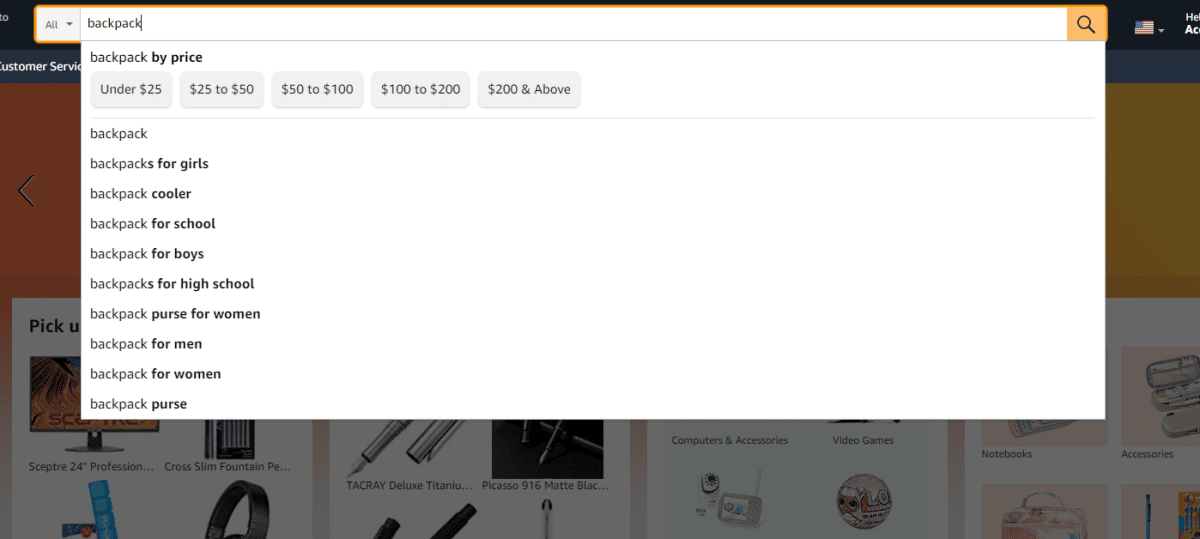
Amazon’s algorithm decides where to rank your product by examining your listings, comparing them to online buyers’ search terms, and showing the most relevant ones on the first page of the search results.
What is the Amazon A10 Algorithm?
The Amazon search algorithm, known as Amazon A9, rates product detail pages following key ranking factors.
Although Amazon does not reveal what these product rank factors are, from my experience and based on what I hear from the ecom community, the A9 algorithm appears to rate products based on:
- Sales history
- Keyword relevancy: This starts with the product title, bullet points and continues with the description of the product.
- Price: If your pricing is significantly greater than that of competitors, your competitor may win out.
- Stock availability: If you’re out of stock, the listing ranking may drop.
The Amazon Algorithm A9, now known as the Amazon Algorithm A10, has undergone updates.
The latest upgrades place a greater emphasis than ever on consumer behavior.
The more you make sales, the better your product ranks, the better your product ranks the more you make sales.
It’s a loop that feeds itself.
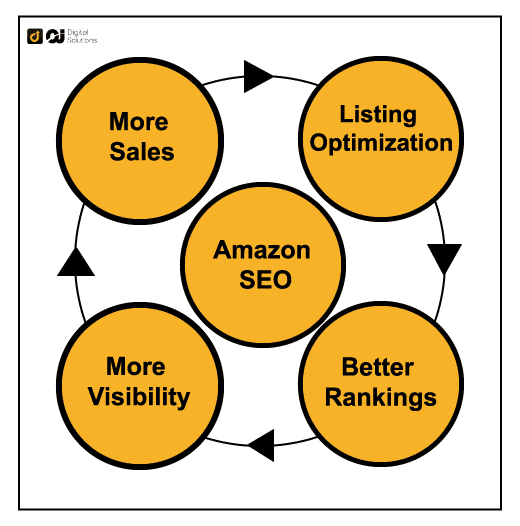
How Does Amazon Product Ranking Work?
It is impossible to precisely say how Amazon’s search algorithm prioritizes customer queries.
Everything from fulfillment strategies, keyword relevancy, product availability, and sales velocity can either help or hinder your attempt to rank well in Amazon search results.
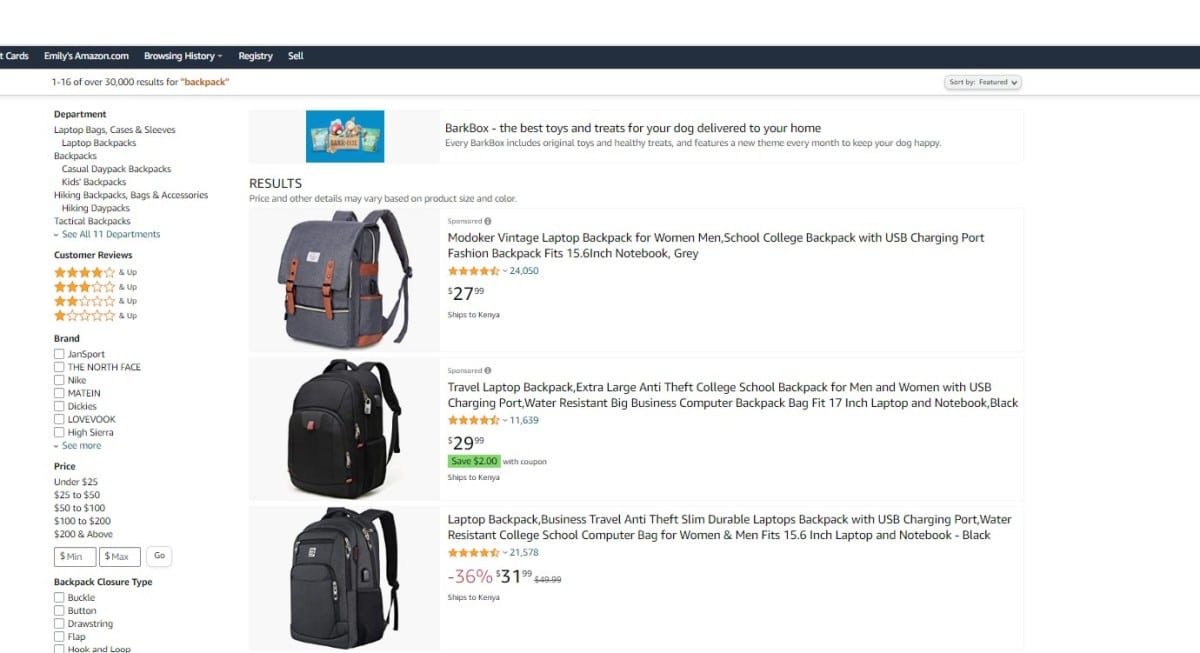
Amazon Search Results – Source: Amazon.com
The search algorithm is continually evolving and improving as a result.
Therefore, an online seller needs to be aware of the key search ranking elements that the Amazon A10 Algorithm takes into account to keep up with the always-evolving Amazon.
Factors Influencing Amazon A10 algorithm
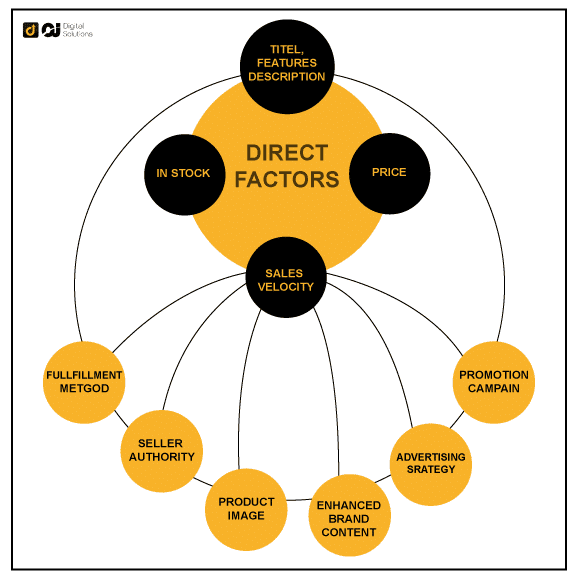
Seller Authority
This speaks to the control that the seller possesses over the buy box or Amazon listing.
This is influenced by a number of smaller elements, including performance indicators, the seller rating, the number of products in their catalog, as well as the seller’s length of Amazon activity.
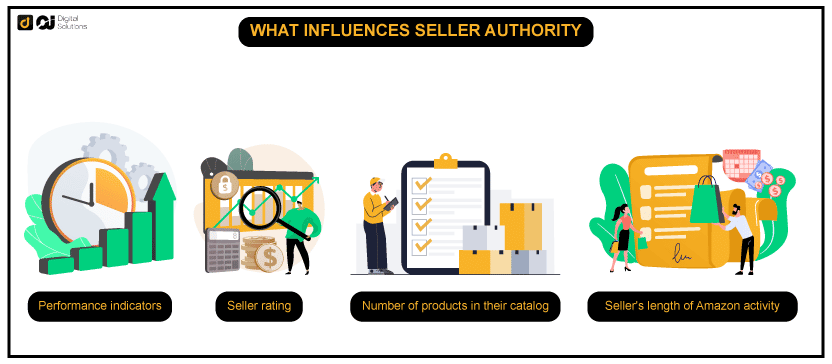
Amazon’s ranking algorithm is therefore influenced by having a huge inventory and positive ratings.
Your seller authority substantially increases because it suggests that you are providing clients with a decent bargain.
You can also improve your seller authority in the following ways:
- Respond to inquiries from clients and deal with any problems or complaints fast and improve customer satisfaction.
- Pick a reliable fulfillment method to prevent having problems with shipments that lead to negative client feedback.
- Keep an eye on your stock levels to keep your products available so that customers can buy them right away.
- Pay close attention to indicators for sellers such as valid product tracking, refund rate, order cancellation rate and others.
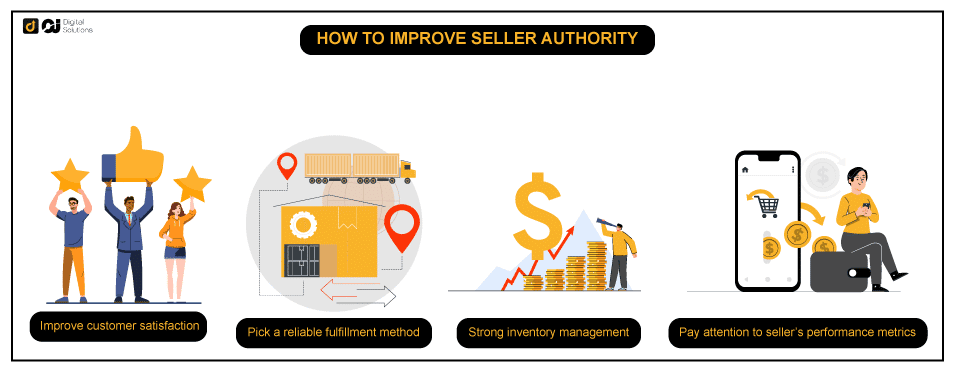
Click-Through Rate

The number of clicks your product gets from the search results page is known as the “Click-Through Rate.”
The greater your Amazon CTR, the better your product’s organic ranking.
CTR is one of the most important Amazon keyword ranking factors.
If people are not clicking on your listing, Amazon will conclude that it is not relevant to the search query.
You can get more organically generated clicks by:
- Creating a highly captivating main image that stands out from competitors.
- Optimizing your product title by highlighting your product’s key benefits and USPs.
- Setting a competitive price.
- Driving external traffic tor your product page by using social media ads like Tiktok, Instagram, Facebook or even Linkedin (Depends on where your target audience is hanging out), signing up for the Amazon Influencer Program, content marketing or by using any other off site traffic tactic that works for your company.
PPC Sales
PPC campaigns were one of the key ranking factors of the Amazon A9 algorithm.
In the most recent update, that has been adjusted.
PPC campaigns are still useful, but the emphasis has changed dramatically.
PPC sales may have caused your sales to soar initially, but they are not the main factor affecting how visible your products are on Amazon.
To get the most out of this, run your PPC ads as usual while diversifying your ad budget and focusing on other areas, such as off-Amazon advertising.
This can provide quality traffic and valuable leads to your product listings to adjust to this most recent update.
Consider PPC campaigns as just one component of your long-term growth strategy but not the main.
Sales History
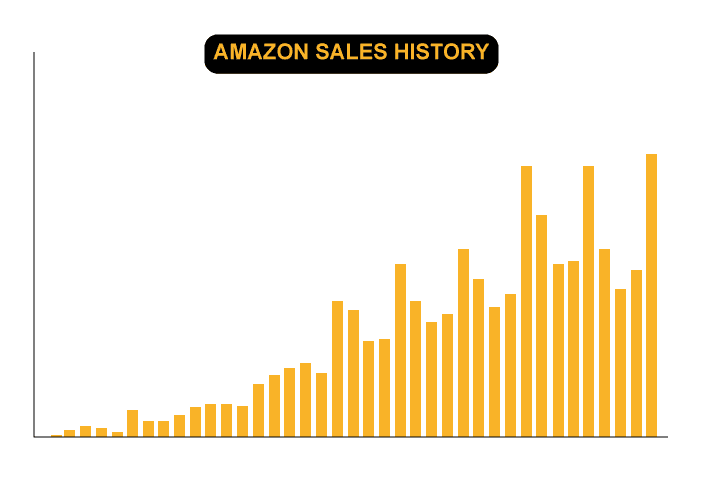
When determining where to place your item in the organic search results, Amazon considers the entirety of your sales history.
Items with a steady sales history appear higher in relevant search results on Amazon.
The product’s rank has become more heavily influenced by sales from clicks that were organically generated rather than through advertising.
A good sales history indicates a good customer experience overall.
You can Improve your sales history by following these tips:
- Grow an e-mail list that you can use to launch email marketing campaigns offering discounts and promotions.
- Keep an eye on your inventory levels. If your sales stall, you can move in with promotions.
Keywords
The emphasis has switched to the buyer intent, even though having relevant keywords in your product listing on Amazon is still a crucial component of product ranking.
Amazon A10 encourages Amazon merchants to do more research to better understand their buyer persona.
Try optimizing your product listing in a compelling way that draws customers’ attention rather than filling it full of your most profitable keywords in the product descriptions and titles.
Conversion Rate
Another key factor that affects your ranking is the percentage of shoppers that clicked on your product detail page and then made a purchase from you, also called the Amazon conversion rate.
You can also boost conversions by:
- Writing a persuasive product copy that showcases your product’s benefits and USPs.
- Leveraging the A+ content feature (only for registered brands) to make your listing more appealing. You can check out these enhanced brand content examples.
- Adding a video to your amazon listing to communicate the benefits of your product more easily.
- Maintaining a competitive price.
Organic Sales
One of the major variables that strongly affects the Amazon SEO algorithm is the number of sales that come from the Amazon website’s organic search engine results.
It counts as an organic sale if a user searches for a product and buys your item from the search page results.
This means when customers buy your product without any marketing or advertising.
The difference between the A9 algorithm and the A10 algorithm
Amazon A10 functions much in a similar fashion to Amazon A9 with a few significant variations:
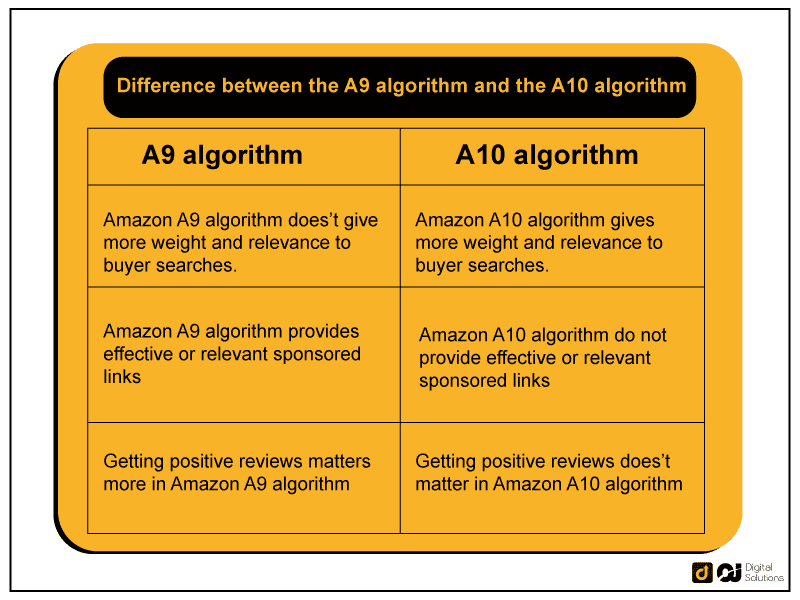
- Compared to Amazon A9, Amazon A10 gives more weight and relevance to buyer searches.
With Amazon A9, the algorithm steered consumers toward more lucrative products.
With A10, on the other hand, the emphasis has changed to providing users with much more accurate results, even if the overall outcome is less lucrative.
- With the A10 algorithm, sponsored links do not provide as much effectiveness or relevance as they did with the A9 algorithm. This makes it more difficult to implement strategies like pay-per-click (PPC) campaigns profitably.
This does not imply that PPC advertisements are useless because they still have a lot of value. Simply put, your strategy and sophistication in dealing with them must increase.
- Among the most crucial variables in the A10 algorithm is seller authority, which means that getting positive reviews matters more than with A9 in this case.
Additionally, it implies that having a lengthy history with Amazon (longer is preferable to recent) and a low return rate and effective return management have an impact.
How To Improve Your Ranking On Amazon In The A10 Algorithm
Consider the competition
Visit the product sites of competing brands before you start to learn what customers are currently looking at.
You’ll be informed of the greatest strategies and prospects for your brand if you consistently grasp what your competitors are doing and what is working for them.
Set appropriate prices
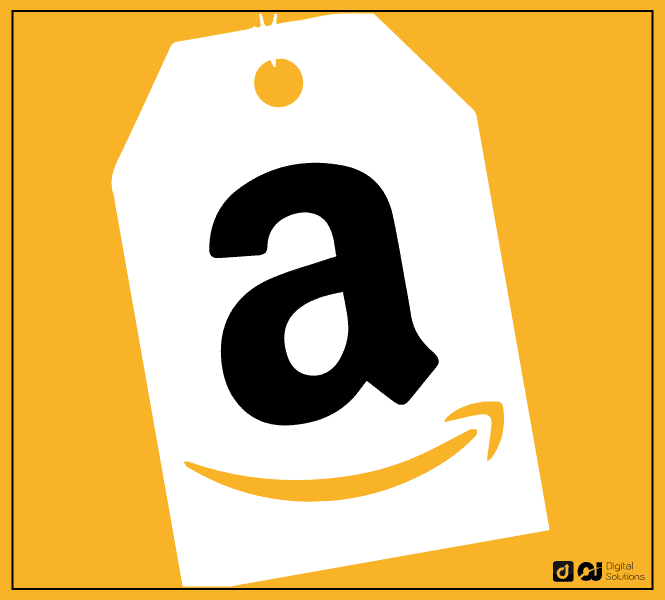
Finding the ideal Amazon price is difficult.
While brands want to generate money, they don’t want to turn off customers.
Even when offering the best price, be careful not to overdo your discounts.
Discount pricing plays a large role in building trust, which is a crucial conversion component.
Encourage reviews
Product search rankings are aided by reviews.
A product with more reviews than its competitors typically rates considerably higher than one with fewer reviews.
Among the best strategies for boosting the number of reviews is to follow up with people who just bought the product through email and ask them for a review.
Optimize your product listings
Optimization is the practice of improving your listings on Amazon to boost traffic and conversions.
One of the most important strategies to keep your product at the top is optimization.
According to a study, 64% of clicks go to the first three organically ranking listings in the search results.
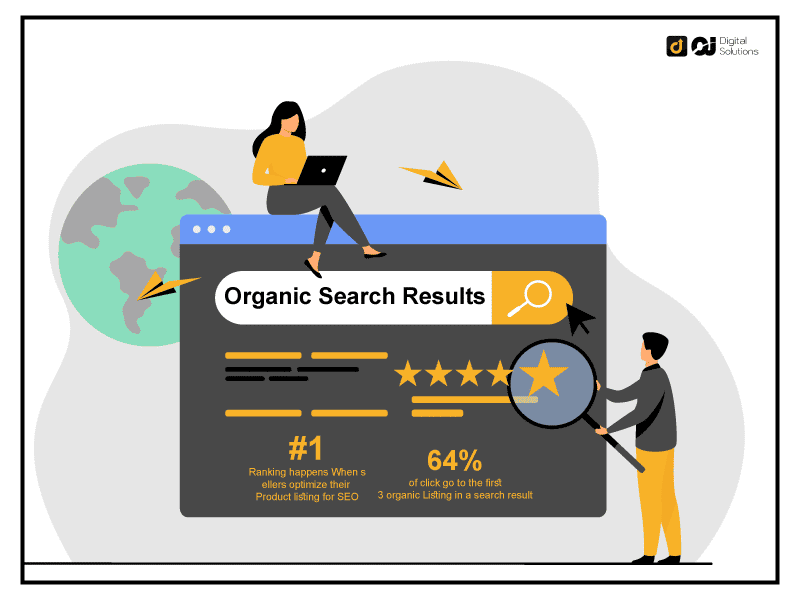
For your Amazon business to be profitable, you need to ensure that every aspect is considered, including the product title, description, marketing plan, and visibility through keywords and other strategies.
FAQs
What kind of algorithm does Amazon use?
Amazon utilizes the A9 Algorithm to determine how products are ranked in search results and which ones will rank higher than others.
Just like Google’s search algorithm, it takes keywords into account when determining which results are most pertinent to the search and which ones to display first. The Amazon A9 algorithm has been updated, and the newer version is referred to as Amazon A10.
What is a good Amazon ranking?
The Best Seller Rank (BSR), also known as the Amazon sales rank (ASR), is a ranking given to all Amazon products by the A10 algorithm. It is determined using an intricate formula that is not accessible to the general public.
The BSR is a reliable gauge of a product’s current Amazon sales performance. Having a top three Amazon Sales Rank means that you are in the first three listings. As a result, a potential customer is now more likely to buy your products.
What is Amazon SEO?
Keyword optimization of a product listing so that it appears higher in the Amazon platform product searches is known as search engine optimization (SEO). Adding as many keywords (without keyword stuffing) to your product pages’ title, bullet points, and description can enhance the product rank, increase sales, and make it easier for customers to find your amazon page.
The more sales you get, the faster your product will rank higher to the first page
You can use SEO techniques as an Amazon merchant to boost the volume of traffic to product listings, boost awareness of the brand and product, and increase sales and conversion rates.
The Bottom Line
Amazon has become an essential platform for many businesses, so understanding how to make the most out of it is crucial.
The Amazon A10 algorithm seeks to make listings with legitimate reviews and purchases more visible.
It seeks to identify phony profiles, fake reviews and deal with the serious issue of bogus products and reviews.
Additionally, listings that are optimized for client needs are becoming more and more important.
You can effectively compete with other sellers on Amazon by taking the time to appropriately optimize your listing and rank better.
Read this guide on how to beat Amazon’s buy box algorithm to get started.

